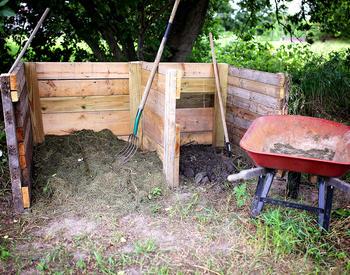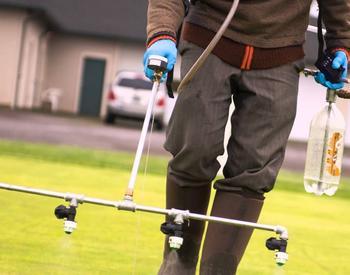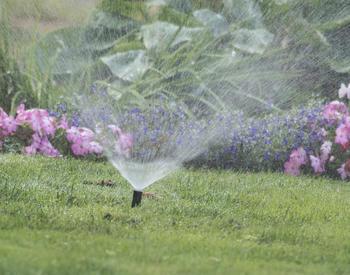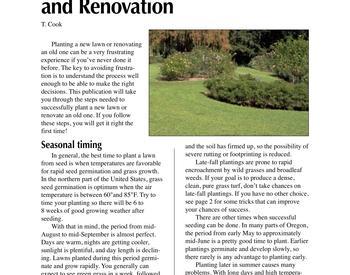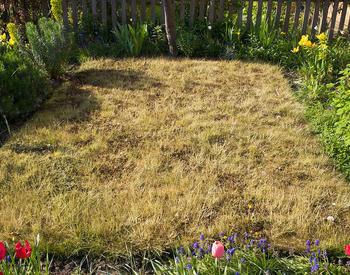During the summer, nearly half of all residential water in Oregon is used to irrigate landscaped areas around homes. A significant reduction in water use can occur by using efficient waterways to maintain our lawns and gardens. The Lawn Watering Guide offers suggestions to gain efficiency while maintaining an attractive lawn.
Many residential landscapes are over-irrigated by as much as 20 to 40 percent. Overwatering can also lead to disease problems and leaching of fertilizers.
Evapotranspiration
Evapotranspiration (ET) is the easiest way to determine if you are over or under watering your lawn.
ET, measured in inches or millimeters, is the amount of water that evaporates from the soil plus the amount of water that transpires through the leaves of a specific plant, in this case, lawn grass. Lawn Watering Guide for Eastern Oregon
The following instructions will help you use ET information to prepare a lawn-watering schedule for your lawn.
Set five flat-bottom cans or coffee mugs at various places on your lawn. Try to place them halfway between the sprinklers or in areas that generally receive the least water. More than five cans may be necessary for large lawns.
- Turn on your sprinkler for exactly 15 minutes.
- Measure the depth of water in each can and determine the average water depth of the five cans.
- Check the chart for the water depth in inches according to the season.
- Read the number of minutes you should water about every second or third day and record the times for future reference.
NOTE: Use these times as a guide only. You may need to water more when it’s extra hot and windy (usually 3 times a week), or less when it’s cool or rainy.
| Number of minutes to water twice weekly: | |||
|---|---|---|---|
| Average water depth in cans (inches) after 15 minutes | Spring | Summer | Fall |
| 1/8 | 66 | 115 | 46 |
| 1/5 | 44 | 77 | 30 |
| 1/4 | 33 | 57 | 23 |
| 1/3 | 26 | 46 | 18 |
| 3/8 | 22 | 38 | 15 |
| 1/2 | 16 | 28 | 11 |
| 5/8 | 13 | 23 | 9 |
| 3/4 | 11 | 19 | 7 |
| 1 | 8 | 14 | 5 |
| 1 1/4 | 6 | 11 | 4 |
| 1 1/2 | 5 | 9 | 3 |
Additional Water-Saving Tips
- Best watering times are early morning.
- Adjust to the guide recommendations gradually to allow the grass root system time to adjust to change.
- Watch for visual signs of under-watering such as dry spots or wilting.
- If water is flowing off the grass into the gutter, divide the watering time into two blocks to allow the soil to accept the applied water.
- Increase the amount of water over the spring season to reach the summer water needs, and gradually decrease the amount of water in the fall as the winter rains approach.
- Reduce watering times by 20 percent of the time suggested in the guide if you have a Bermuda grass lawn or another type of low water-using grass.
- Water slightly more for small lawns surrounded by concrete or other heat-reflecting urban structures.



